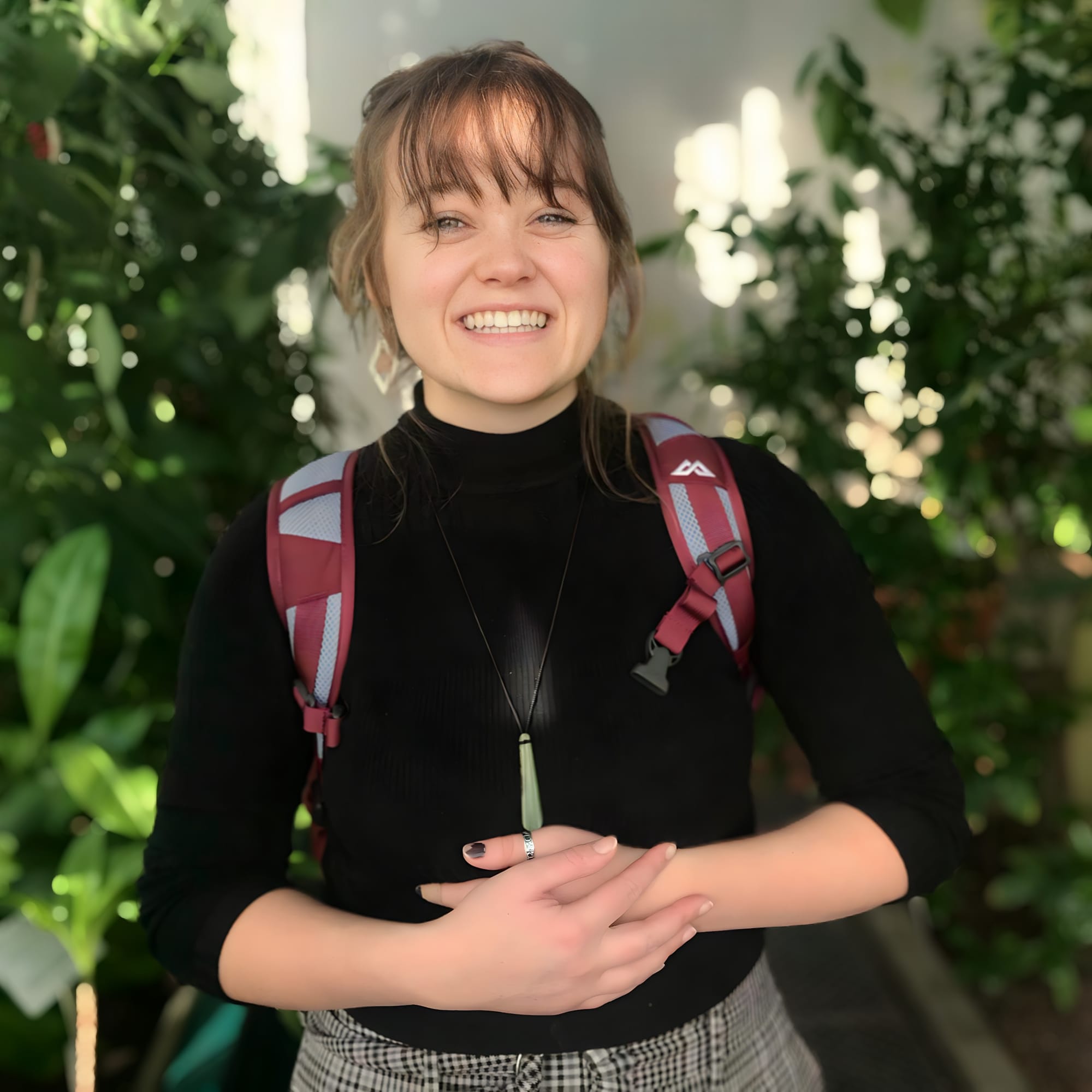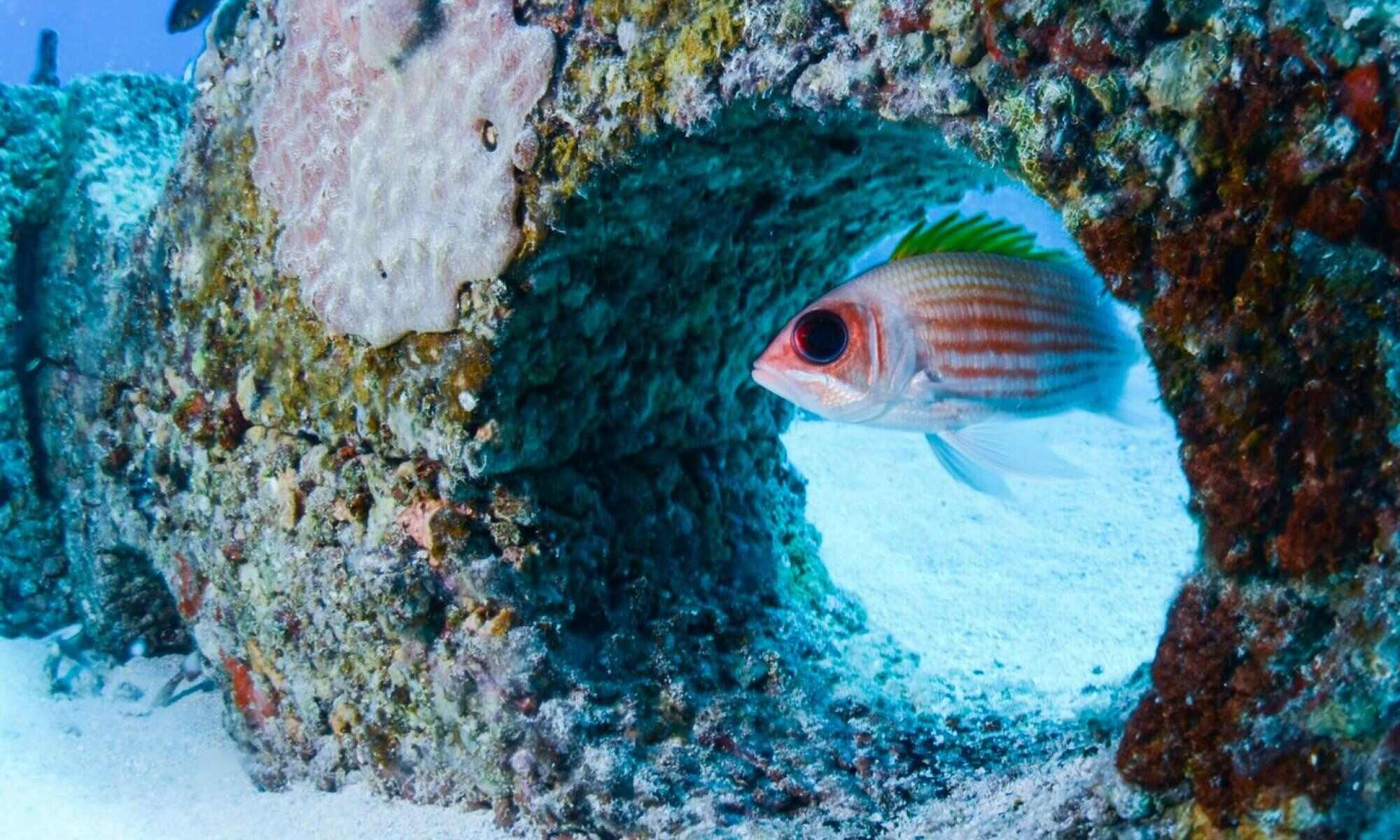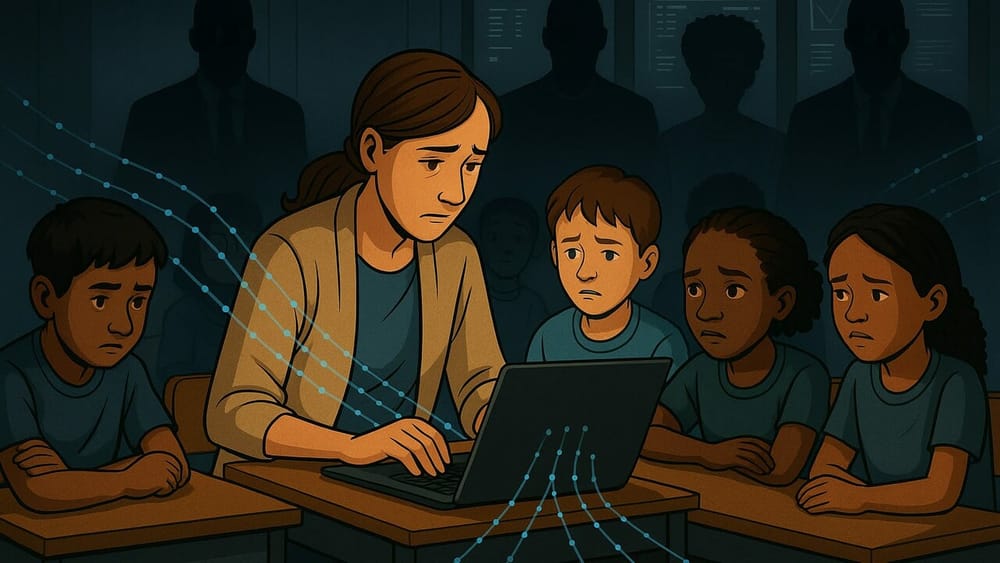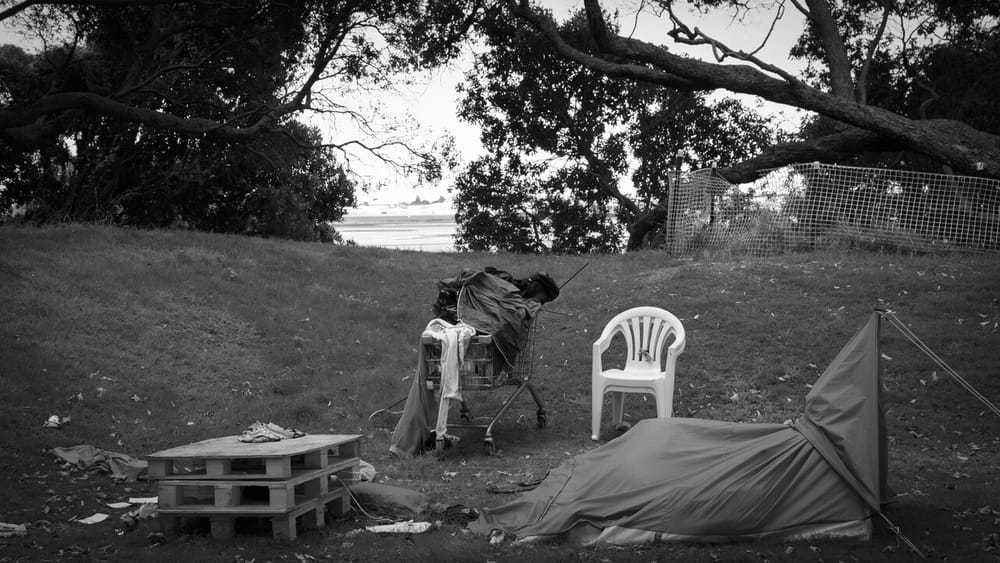Modern problems require modern solutions. The new frontier of solution-based innovation lies in the field of biotechnology. Bioinnovators: The Humans At The Forefront Of Biotech is a series of interviews with the organisations and entrepreneurs at the forefront of changing the world through biotechnology. With each interview, we hope to shine the light on conscious innovators and trailblazers across the globe who are using the natural world, combined with modern technological innovations, to find new solutions to the world’s most pressing problems.
Coral reefs are considered some of the most important biodiversity hotspots on the planet, sheltering nearly one quarter of all known marine species. By 2030, it is estimated that over 90 percent of the world's reefs will be adversely impacted by human activities, warming waters or ocean acidification. Reef Life Foundation are at the forefront of this crisis, harnessing advances in biotechnology to revitalise, restore and protect our oceans. Their IntelliReefs (mineral-based marine structures) are designed with the natural environment in mind, specifically engineered to fit within diverse marine ecosystems while encouraging rapid and sustainable growth. We sat down with Melody Saunders Brenna, CEO and co-founder of Reef Life, to discuss their current projects and what lies ahead.
It is great to have you back, Melody. When we featured Reef Life Restoration in 2018 you spoke of a project you were working on in the Caribbean, the Sint Maarten Oceanite Project. I thought we could start by talking about how this project is looking now?
Yeah, some cool things have happened this year; you really can't predict what creatures are going to do! We humans think, "Oh! We can make them do this." Really? I don't think so! Creatures have their own brains. So, back then we had put [the IntelliReefs] in three spots on the island. One was in what's called a marine protected area. It was right by the prolific corals, protected from divers; no ships can go in there. We really thought that one would be just [a] rock star and it has been, which is cool. And then we put a set over in a seagrass bed—there were no corals, no fish, no turtles, nothing, just grass and sand. We [thought], "Well, let's see what it does." Then we put one over by the dock where the big cruise ships come in. There's always a bunch of hubbub underwater there: tourism, boats, fossil fuel—icky stuff. When we first [went] there, one of the experts said, "Don't put your IntelliReefs over there, you're just wasting the material. Nothing's going to grow on it but what's called turf algae and it's just kind of slime."
And that's part of why Florida is in so much trouble, and the GBR [Great Barrier Reef] as well. The water is different, this turf algae takes over and there's no place for the baby corals to land. [Everything] is covered in slime.
One [IntelliReef] is in the eel grass and seaweed without any other corals; it is astonishing to see the corals swim to that part of the island. Corals are far smarter than dumb old humans, I think. So when they have a spawning event—it's like once a year, maybe, unless they get irritated—if you're not there, that's it, all the spawn go out all over the ocean. They can hear better than we can, so they're listening for cues. They're listening for happy fish, they're listening for [the] rustling around of lots of fish talking to each other, they can smell a healthy environment, they want biodiversity. So they're listening for all of this hubbub, and when they find it and can smell it and they can see pink—it's called crustose coralline algae—they think, "Oh, this is a groovy place, I'm headed straight there." Even if it's not their home, they're headed there anyway because of the cues that they can pick up on.
Then the Nature Foundation went into COVID restrictions and they couldn't get their boats all over the island. So they didn't go over to the [IntelliReefs] by the pier for two years. We just kind of wrote them off and thought, "Well, there's an experiment." [Until] a diver friend of mine went down and said, "Mel, I'm going to shoot, do you want me to go over to the third branch and see what I can find?" And I said, "Sure." So he swam over there and took some footage with the Nature Foundation's Leslie Hickerson, who is awesome. And there were corals all over the damn thing.
So, if it will work in a really desperately awful part of an island and do what it's supposed to do there, then we have the cue that we can actually save places that scientists had said, "Don't bother, it's too screwed up." So it was lovely to see it. There's all kind of wild fish over there and all kinds of crazy corals and sponges and this multispecies action, which is what it takes for things to thrive.
Melody Brenna, the founder of IntelliReefs, a sustainable marine-based solutions company based in Salt Lake City.
So, would you say that was your biggest take away from the project—that things can thrive in areas that people might say is too difficult, or isn't worth it?
Yeah, to think that there are places that somebody who knows a bunch of stuff says, "That's not worth saving." You know, there are seven reefs on the planet that the UN, the big dogs, have said, "These are worth saving," and it's only because of the biodiversity. Florida didn't make the cut. The Caribbean didn't make the cut. Mexico, which has the next biggest reef next to Australia, didn't make the cut. GBR didn't make the cut because there's so little complete biodiversity. Yes, maybe they could save them, but the biodiversity in the coral triangle in Malaysia is still thriving and there are two islands off of South Africa, Zanzibar and Madagascar that have weird biodiversity that the whole rest of the world doesn't have a drop of. So in their eyes, if we only have a decade, if we can only save these seven and maybe save the whole planet, it's just down to biodiversity. Isn't that wild?
It is.
But now we know that this product, this mineral [Oceanite], kind of "back to nature, letting mother nature do it herself," works in a troubled area. Now we know we shouldn't stop.
I like that.
It was an amazing thing to see. And boats had smacked into the reef so it was all broken; [they] had just hit it and moved on because that's the way the world works, [how] commerce works, and militaries, [they] are always smacking a reef somewhere. But [the coral survived] anyway, which really is cool.
That's very cool. So, moving away from the Caribbean now, you have recently co- founded your first Canadian project with Emily Higgins, IntelliReef's director of ocean science. Now, this project centers around kelp. Researchers have documented an 85–99 percent decline in kelp biomass over the last forty to sixty years along Nova Scotia's eastern shore. Could you talk about what led you and Reef Life here, and what role kelp plays within Earth's biodiversity?
Yeah, that is a very cool question, and this is something Emily didn't know and I didn't know either. Remember we were talking about cues that coral have: sight, smell, taste, [and] everything? Believe it or not, kelp larvae follow the same cues. They're looking for that crustose coralline algae. They're looking for that pink calcium buildup on a very hard substrate. They're looking for a healthy place with all kinds of fish because they thrive in that area too. Kelp also, they're super quick growing, they hold carbon and then the carbon goes back down into their roots. Scientists understand that kelp are a carbon holding element, and that's one of the reasons why the kelp is so important to Canada and to the ocean—because it's holding all that yucky stuff in it. Not only [is kelp] providing places for the baby fish, places for the big fish to hide, places to, you know, kind of help that coastal protection, but it's a huge carbon mitigator as well. So if we had no carbon mitigation on the coastlines of temperate waters—Canada, Norway, you know, all of that— then we really are in trouble in a totally different way than the coral reefs. It's just a whole new batch of trouble. And we didn't really realise when we got into this that the kelp follow the same cues.
I love that you've been able to apply that previous knowledge of corals in this new kelp ecosystem. So, last week you were in Canada deploying not only IntelliReef's flagship cold water project using oceanite nanotechnology but also the world's first nanotechnology kelp restoration system. How's it going and how do you think it's going to end up?
It's wild to think that something that you made [the IntelliReefs], that's that big and that beautiful, travelled all the way to Halifax, then got on a barge, then got off the barge and went down into the water. Just the journey of those minerals and the journey of the science itself is so astonishing.
The dive team who helped us launch our kelp restoration project and deployed our new ReefShip modules is an Indigenous dive group, Dominion Diving. They actually have a TV show and they're like the lords of the ocean. [They've been] Indigenous owned for the past 60 years, [which is] very cool. So their impetus is, "This is our home, this is our homeland, this is [sic] our home waters. We grew up fishing out of this. This is why [it] is so important to us to try to clean this area back up—so that our Indigenous heritage can continue generation after generation." It's really been astonishing because this is big-world industrial–grade stuff.
[Also] the Metaxas Lab, [specifically] Dr Anna Metaxas, she's the head at Dalhousie University up there, and her team planted hundreds of our little oceanite dome modules underwater in her test waters there. Lobsters are already crawling all over them, it's like, wow. So she's going to actually pre-seed these small modules in her laboratory and bring them back out. So she is a rock star, no fooling. So that'll be fun to see, [and will] take the science into a bigger scale than we did in the Caribbean.
What is the background to ReefShips? How are they different from your previous technologies? Is it a response to the different ecosystems found in Canada?
The ReefShip modules are a response to coastal restoration all over the planet. Researchers have asked us, "Can't you design something natural? Why are we putting some kind of square block thing [in the ocean]?" So our designer, who is actually my son, Guyon, thought if these materials are going to be there a thousand years, it's just going to become a calcified organism of the planet. Because the water and the creatures can go through that rock, they just inhabit it. But there's no reason the original rock itself can't look organic and natural. It doesn't have to look like somebody designed it. The end game is that it is just a part of the ocean, a healthy, thriving part. Yes, it will be covered at some point, but it still needs to have that natural look and the natural beauty of what was there a millennia ago. So that really was the point: why [not] do something that's natural looking so that, even when it first goes down, the coral, the kelp, the fish are like, "Oh yeah, cool condo, I love it. It's innate to my system as a grouper fish to go for something like that." And I think it's a far faster acceptance rate because of the design as well as all the little minerals, [so] that's what we're looking for: speed.
So now that they've gone down, how does it feel? Was that just amazing to witness?
It was amazing. There is some great footage—everybody had to wear a hard hat. I was on the support vessel for the huge barge that had all the pieces stacked up on it [with] the big crane. I was on the blue boat behind it with the divers. You know, there's this massive amount of communication between all of these vessels. It was an extraordinary experience to see a real professional group of experts put this in the water and to know that they were in love with the product and appreciated the product. So you see this big crane come up with these massive things and they're making sure it's in the right place and making sure it's settled where it's supposed to be on this big ocean map. They'd been in that water forever, their whole lives. A lot of these people had worked there since they were 12 and 13 because their dads worked there. So, to them this wasn't just a job site. Their media guy, [Cam Howlett], he said, "This means a lot to us as a company." I mean they probably have 50 to 100 divers, they do all the big marine stuff, they do military stuff, but to them, this saving of their waters was a big deal. Very sweet.
I admire that you've recognised and incorporated Indigenous people's work into what you're trying to do. It's definitely the way forward for our planet.
It has to happen. I grew up in Texas but I was very close to New Mexico, which has all kinds of phenomenal [Native American] tribes: the Navaho, the Hopi, the Kiowa. I was in and out of New Mexico my whole life, and so I'm used to appreciating this is somebody's land here, their customs,[and] their way of life. We are the outsiders. They own this place and have created these communities. We have no right not to do it with them, in collaboration with them.
I think that is such an important value, and one I didn't realise was incorporated into your work. One of the other values that I find admirable in your work, which is evident throughout your projects, is your focus on sustainability. One example of this is Reeflings, which is the name you've given to the coral offspring of the IntelliReefs. You say that they are better able to survive extreme weather, changes in water chemistry and improve fish aggregation and species biodiversity. Now, with Reeflings, you're not only making something that meets the demands of its environment, but in fact creating something more durable. Could you explain how you design the IntelliReefs to enhance coral offspring and how you've woven the value of sustainability into the design?
Yeah, the design goes all the way into the interior of it and our original plant in Texas, [where] it was coral researchers who came to us and said, "You guys better figure this the hell out and you need to do this tomorrow." And our approach to it was always,"What did the coral like a million years ago and how do you take those minerals and those edges and everything about what it used to be, and create it with a new kind of science?" And the interesting part that nobody else has been able to do is make those rocks stick together. But there are channels in between the rocks, which is what coral reefs were forever ago. And cement is smooth and flat, and you put it down and there's no way for anybody to go through it or live in there. So, to be able to come up with the science at a nanoscale and be able to tweak it—this site needs this, this species needs that, this functionality, like the big ones we put in here—then there's gotta be a wave break on top of all of that. So it's layers and layers of these systems that take both the science and the beauty of the minerals and hold them together and design it so that it's visually gorgeous.
So you've received a formal endorsement from the UN and UNESCO; could you talk about the work you did for these organizations, what this endorsement is and what it means for Reef Life?
Yeah, I'm going to be a cry baby. It's so big to have [organisations of] that scale write you that letter, saying, "We, the United Nations and UNESCO, endorse what you're doing and the product you're doing and the science that you brought to the oceans." [Tears up]. I thought it would happen because we have turned in the science every year. I spoke at the UN in 2018, I was invited to speak on their ocean panel and they allowed us to put an ocean action project on their website. We've [continued] to write reports that are published, so they called and invited everyone—before this Decade of Ocean Science—would you like to submit, formally submit, you know, what in the world you are up to. So we had to do a formal submission, very formal wording, very exact to their specification. We had hoped that it would be endorsed. It's astonishing for our little company.
That's so wonderful.
It's a testament to the tenacity of everyone who works here to be able to stick it out and just keep innovating and keep innovating. Konstantin Sobolev, who's been the nanoscience director since 2002, I mean, this is his brain child of how do nanoparticles react and how can you get a bunch of rocks to stick together for a thousand years. It's very highly scientific. And then you have to be able to jam them in a mould and then top the mould, then it has to be strong enough to go in the water. So there's all these characteristics in big construction— hopefully your 33-story condo in Florida doesn't fall because you messed up the foundation! It's a big deal to engineer properties of massive construction and be able to do it correctly. So it's everybody working together.
When I read that you got the endorsement, my heart soared for you. It was wonderful. And seeing your reaction as well, that's so beautiful. So, building on what you said just there, the UN has declared 2021 through the end of 2030 the Decade of Ocean Science for Sustainable Development. Can you speak to what this means for the world and where you see Reef Life sitting within this space? Do you have anything in the works that you could share with us?
Yeah, a decade when you're young seems like forever. When you're in third grade, you think, "Wow, in ten years I'm going to be a teenager, I'm going to get to drive my car." To you that seems like forever [away], you're never going to get your drivers license in third grade, I mean, it's just like, "That's impossible; big kids have their drivers license." And it's the same way but in reverse from the United Nations and COP26. They say, "Tomorrow, tomorrow," not ten years from now, not 30 years from now, but "tomorrow, tomorrow." This time frame has to be accelerated. You've got to move super fast. And because we have the science that's scalable and you can move super fast, that's what it means to our company, and it's great that we have the Reef Life Foundation.
We're close with an organization called GLISPA—the Global Island Partnership. And the woman who is in charge of it, Kate Brown, is outstanding. We really built the foundation so that we can give back to these islands that are going to feel it first. They'll feel it a lot more before some guy in London or Manhattan or somewhere else. It's these islands that really, really have to have it. And that's why we built the foundation, so that alongside this big infrastructure, we can make absolutely sure that these smaller island communities and people who really depend on the oceans have the capability [to restore and protect their reefs] and there's some material and the impetus to help them at the same time. We can't just let them hope that someday it's going to happen.
I think the time frame is frighteningly fast, and every person who is in charge of some public affairs or public ministry, I don't care where they are, they need to feel that as well and take a step back from "my party affiliation doesn't do this." They need to drop that stuff and do the right thing because it's the right thing for humanity. It's a challenge.
That is absolutely correct and I think that you've set down a beautiful call to action.
The Earth has an imperative, and if we as humans will just quit fighting over it all and follow the imperative to save ourselves, there may be a chance. I'm not sure, but it's going to take some action to fight. Whoever your governmental party, religion, every other affiliation, to me, takes a second step behind mother nature. The future of our grandchildren and grandchildren's children depends on what we do today.
We need to issue a challenge. We need to challenge everybody who is in charge of something to just drop whatever is their facade, their front piece, their mask, just drop it and move on to save all of humanity and all these little creatures. And the other thing that I think needs to get out there about biodiversity is [that the] tiniest little creature actually makes a difference to you and I on our computer screen today. All of these little tiny creatures everywhere are vital and we can't just overlook them because they're little or seemingly insignificant, because they're not.







